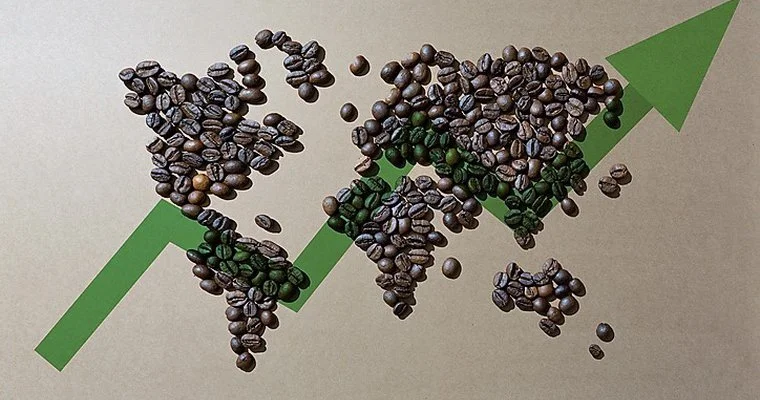Key Developments in the Coffee Supply Chain and Market for 2024
The coffee supply chain is a complex network involving multiple stages from farm to cup, encompassing cultivation, processing, transportation, and distribution. We sampled some stories that have been impactful in our decision making.
Surge in Coffee Shop Numbers
The U.S. coffee shop market has experienced substantial growth, surpassing 40,000 stores for the first time, reflecting an 8% increase in market value to $49.5 billion. This growth is primarily driven by major chains like Starbucks, Dunkin’, and Dutch Bros, which have expanded their footprints significantly over the past year. Starbucks, in particular, holds a dominant 40% market share with over 16,000 stores in the U.S. The popularity of cold coffee, especially among younger consumers, continues to rise, contributing to this market expansion (Daily Coffee News by Roast Magazine) (Intelligence Coffee).
Coffee Prices and Import Trends
Despite various challenges, the U.S. remains the largest importer of coffee globally. However, the market has faced significant price increases due to supply chain disruptions caused by the COVID-19 pandemic and other global factors. The steady demand for coffee in the U.S., coupled with low global stock levels, has led to historic price hikes. This trend is likely to continue as coffee traders and importers navigate high interest rates and financial pressures (Bureau of Labor Statistics).
Regulatory Impacts and Compliance Challenges
The European Union Deforestation Regulation (EUDR), set to take effect on January 1, 2025, is poised to impact coffee imports significantly. The regulation requires all coffee entering the EU to be deforestation-free and traceable to specific plots of land. This has created a sense of urgency among EU coffee importers to secure compliant coffee stocks ahead of the deadline. For coffee producers, particularly smallholder farmers in regions with fragmented production systems, meeting these stringent requirements presents substantial challenges. The cost of compliance and the need for sophisticated traceability systems may strain smaller producers, potentially affecting their market access and profitability (Intelligence Coffee).
Ready-to-Drink (RTD) Coffee Market Expansion
The RTD coffee segment continues to grow rapidly, driven by consumer demand for convenience and variety. Innovations in this market include new flavors and formats, as well as the introduction of coffee-based cocktails and cordials. The RTD market's expansion is expected to continue, contributing to the overall growth and diversification of the coffee industry. Cold coffee, a major component of the RTD segment, remains highly popular, with significant innovations anticipated in retail offerings and technological advancements (Intelligence Coffee).
Conclusion
The U.S. coffee market is witnessing dynamic changes, from the expansion of coffee shop chains to regulatory challenges and innovations in the RTD segment. As the industry adapts to new regulations and evolving consumer preferences, stakeholders across the supply chain must stay informed and agile to capitalize on emerging opportunities and mitigate potential risks. For businesses and investors in the coffee industry, understanding these trends is crucial for strategic planning and sustained growth.
For more insights and support in navigating the complexities of the coffee supply chain, Ntare Consulting Supply Chain Management offers expert guidance and solutions tailored to your business needs. Contact us today to learn how we can help you stay ahead in this competitive market.

